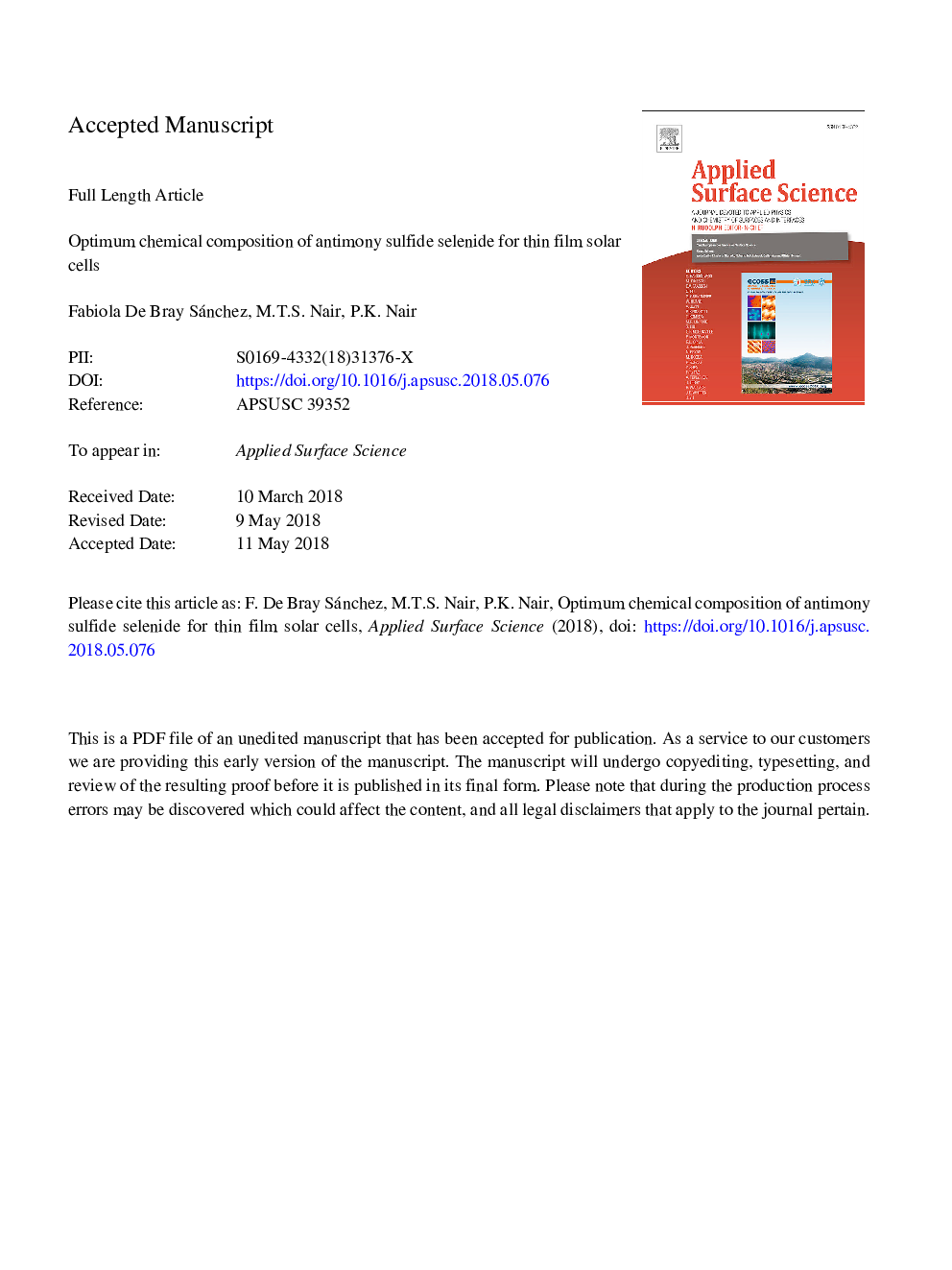| Article ID | Journal | Published Year | Pages | File Type |
|---|---|---|---|---|
| 7833259 | Applied Surface Science | 2018 | 26 Pages |
Abstract
Antimony sulfide (Sb2S3) with an optical bandgap (Eg) of 1.88â¯eV and antimony selenide (Sb2Se3) with Eg 1.1â¯eV, both of orthorhombic crystalline structure, offer a unique opportunity to prepare solar cell absorbers of Eg, 1.3-1.6â¯eV poised toward economically viable, non-toxic and 'earth-abundant” devices. We prepared chemical precipitates of Sb-S-Se from solutions containing potassium antimony tartrate, thioacetamide and selenosulfate, which were used as sources in vacuum thermal evaporation to produce thin films (280-300â¯nm) of composition, Sb2SxSe3âx (xâ¯=â¯0.7-2). The Eg of 1.43-1.6â¯eV and photoconductivity, 4â¯Ãâ¯10â5 and 8â¯Ãâ¯10â7 Ωâ1â¯cmâ1, respectively of these films help to combine a high open circuit voltage (Voc) of 0.609â¯V with a conversion efficiency (η) 5.5% or a Voc of 0.503â¯V with η of 6.2%. A dual-crucible thermal evaporation system allowed the preparation of absorber films of varying composition (x) in the cell structure, SnO2:F (FTO)/CdS/Sb2SxSe3âx/C-Ag. The cell area were, 0.2-0.8â¯cm2. A prototype module of seven series-connected cells of area 1â¯cm2 each produced a Voc of 3.5â¯V, short circuit current 12â¯mA at η, 2.4%. Evaluation of the composition of the Sb2SxSe3âx films through gracing incidence X-ray diffraction is illustrated; and device parameters and solar cell perspectives of these materials are presented.
Keywords
Related Topics
Physical Sciences and Engineering
Chemistry
Physical and Theoretical Chemistry
Authors
Fabiola De Bray Sánchez, M.T.S. Nair, P.K. Nair,
